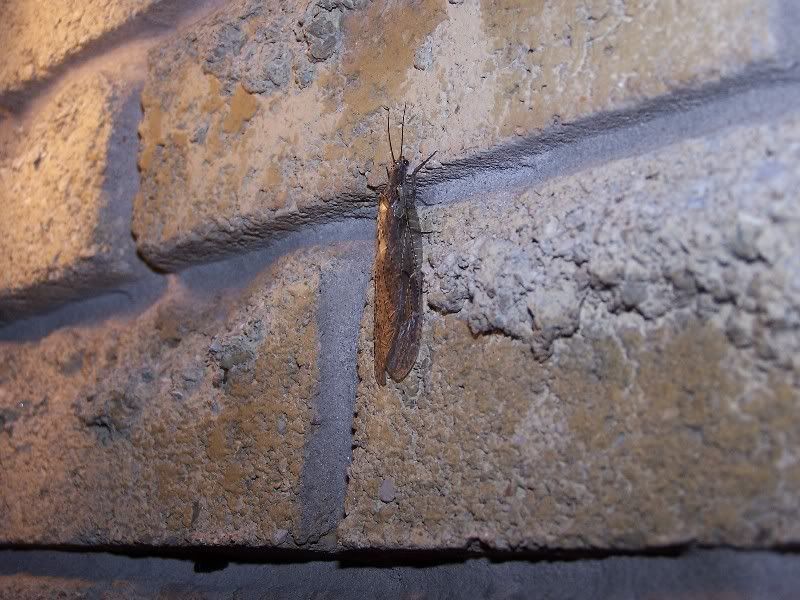Flying Insect ID
- Thread starter oxbaker
- Start date
The general looks tells you they are Corydalidae, related to the dobsonflies. The size thin medium length antenna ID them as genus Neohermes, the grey fishflies. You've probably had a 'hatch' nearby as the larvae all emerge into adults at the same time, mate quickly, and die.
The lack of spots on the forewings that would be visible in the first picture tell us that it is not a dobsonfly (Corydalus cornutus being the only species in that area called dobsonfly). Also, in a female dobsonfly the mandibles go straight out from the head and are decently large (nothing compared the males of course.) The profile shot in the second picture confirms it is Neohermes and not Corydalus as the mandibles would be very visible. Neohermes adults are often larger than 5 cm, pretty big for that family.
I can not tell from the picture if the specimen is male or female.
I can not tell from the picture if the specimen is male or female.
interesting..none of my female dobsons have spots..and it does resemble the ones in my collection bigtime..however, there's always a chance I didnt look at the pic close enough.The lack of spots on the forewings that would be visible in the first picture tell us that it is not a dobsonfly (Corydalus cornutus being the only species in that area called dobsonfly). Also, in a female dobsonfly the mandibles go straight out from the head and are decently large (nothing compared the males of course.) The profile shot in the second picture confirms it is Neohermes and not Corydalus as the mandibles would be very visible. Neohermes adults are often larger than 5 cm, pretty big for that family.
I can not tell from the picture if the specimen is male or female.
i will take your word for it.


